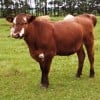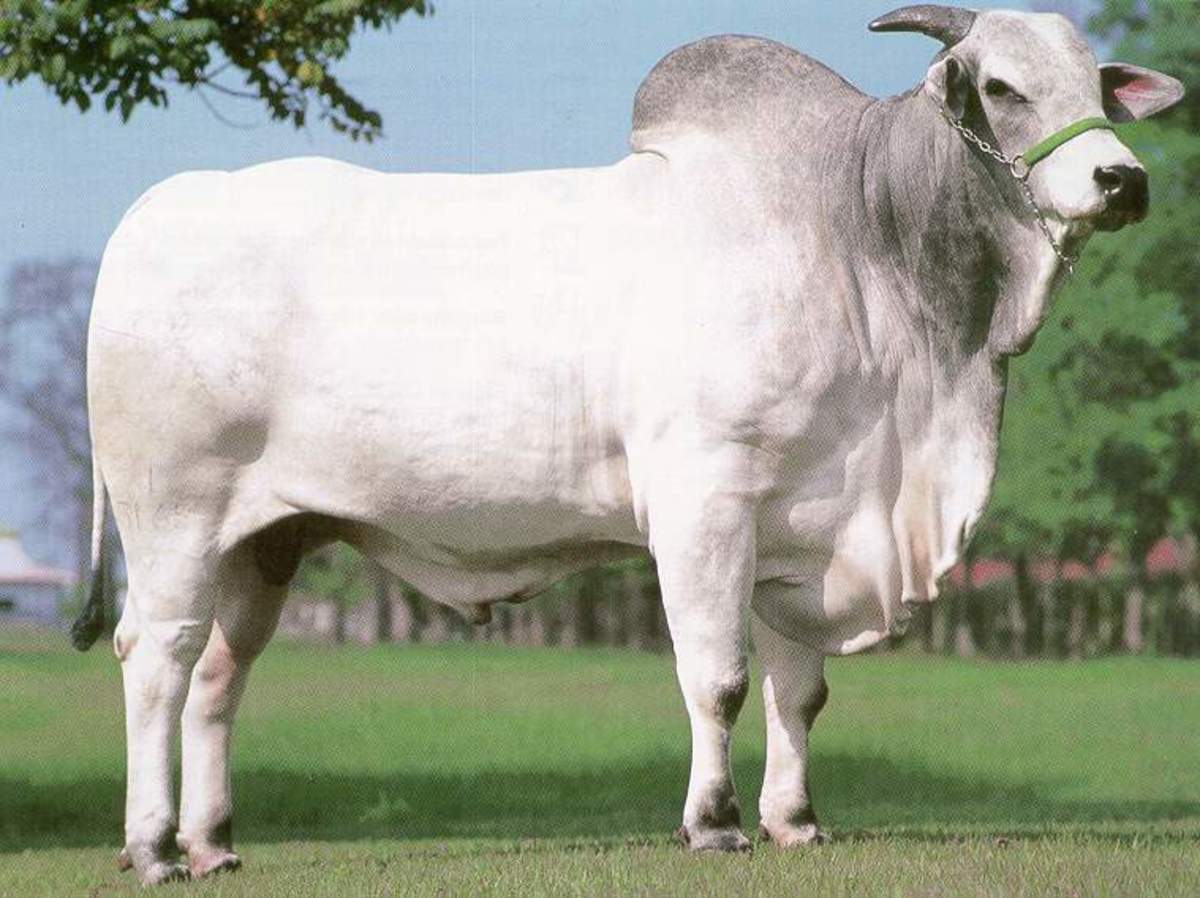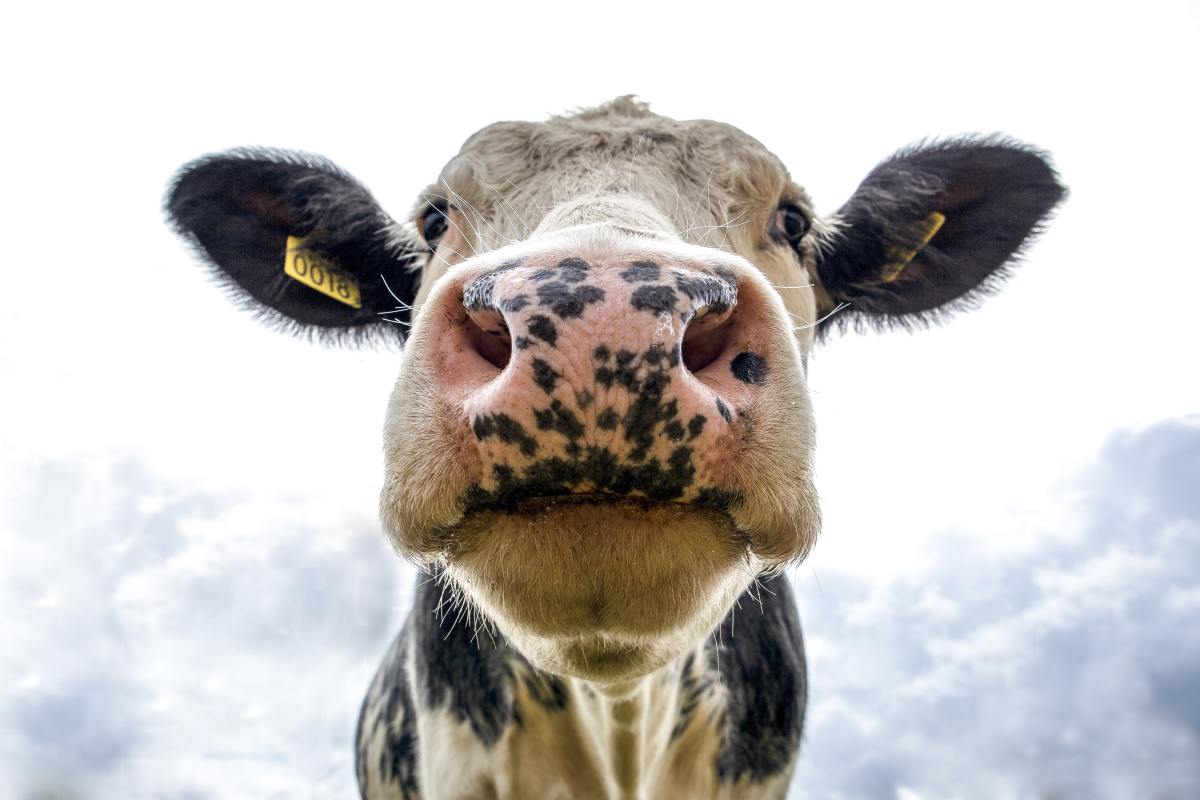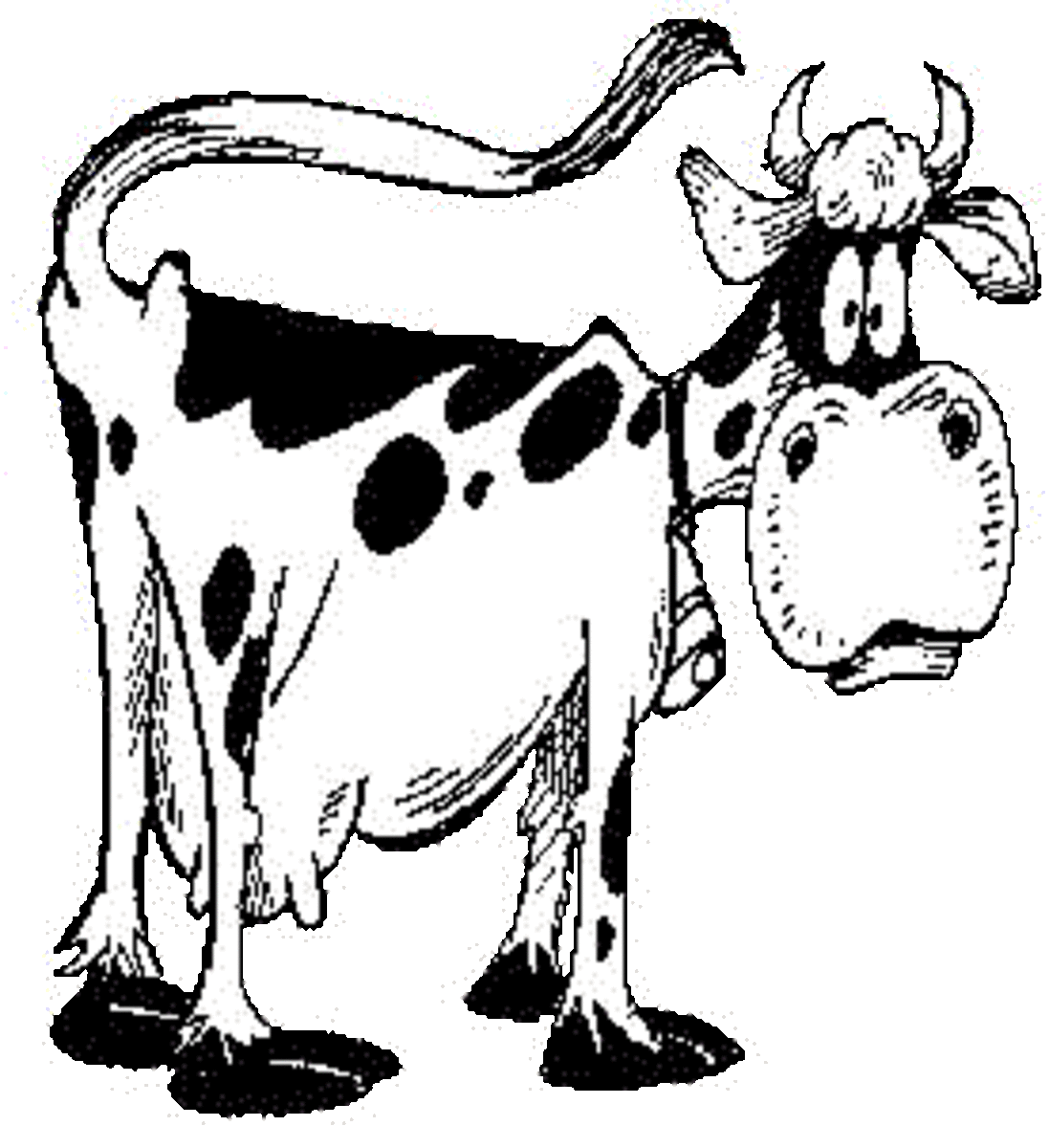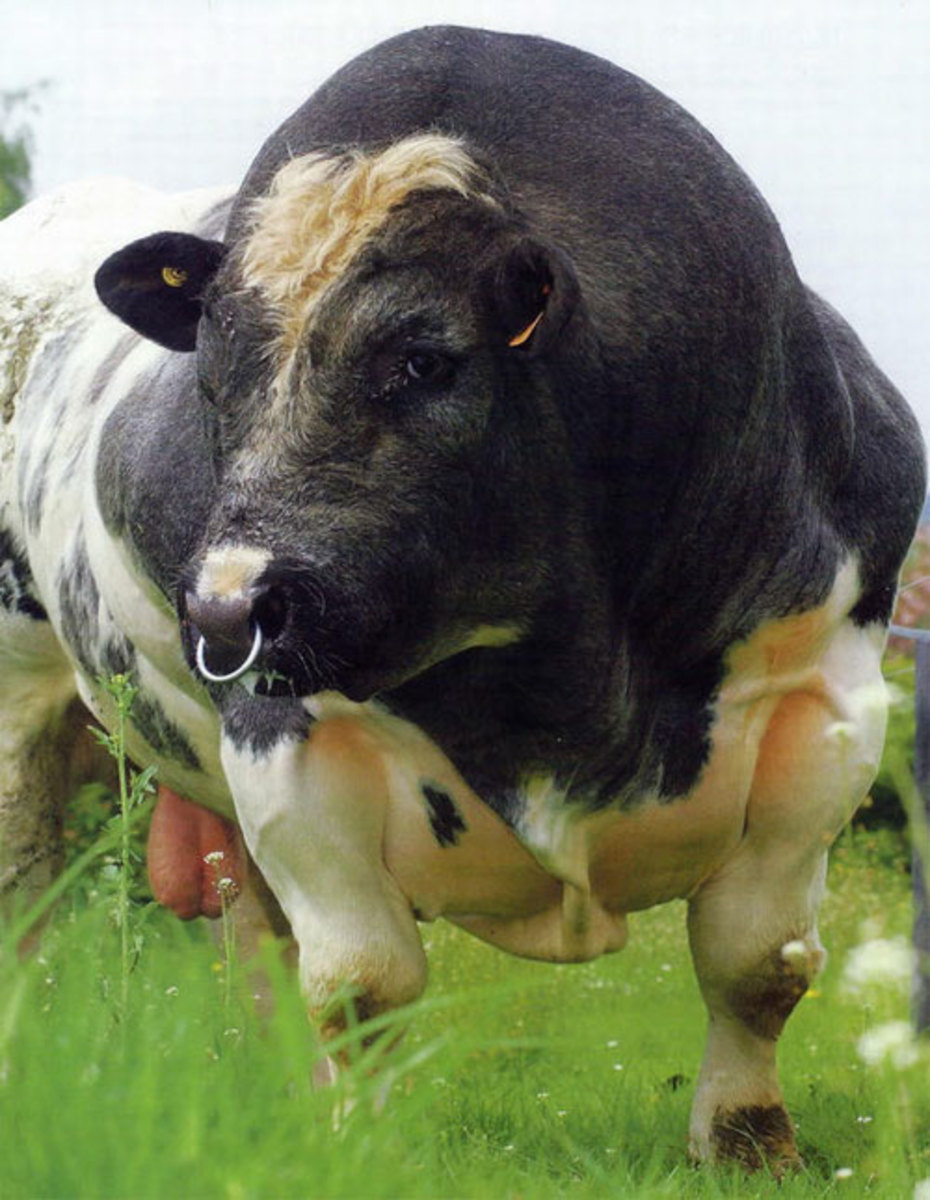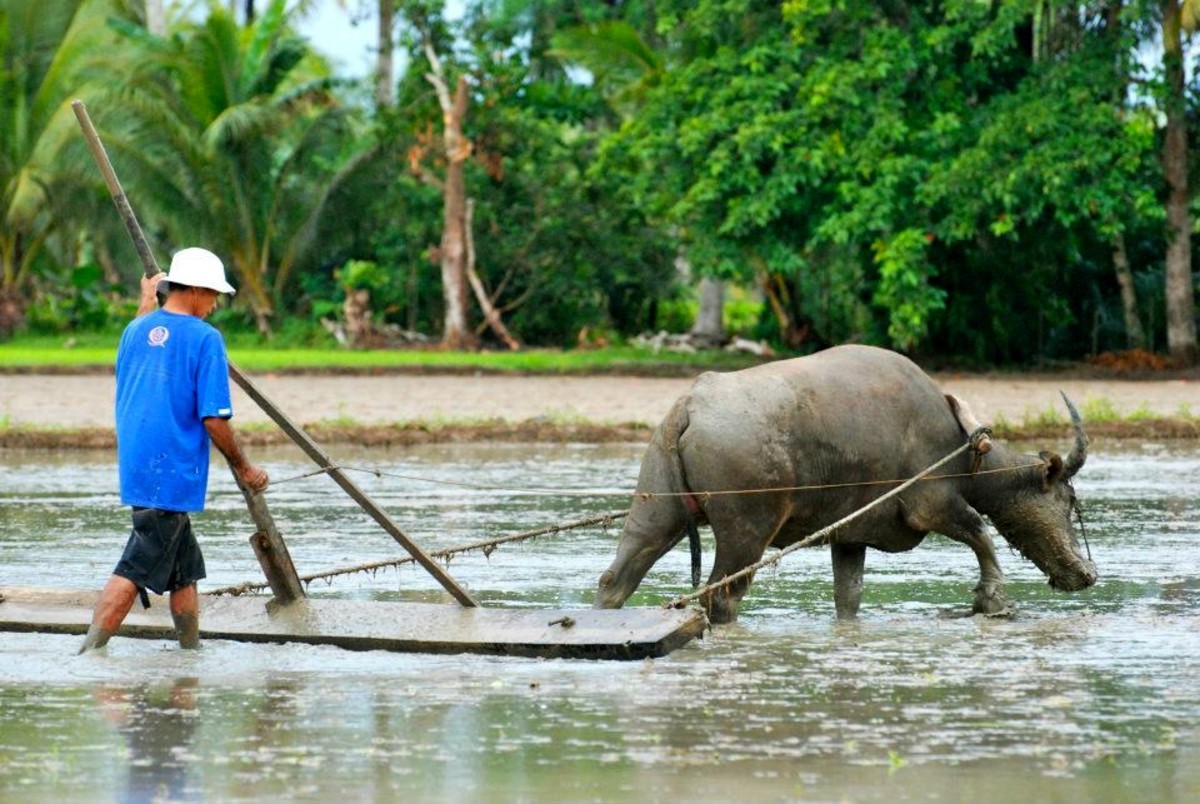Ethics and Ethical Concerns of Raising Cattle on Pasture vs. The Feedlot
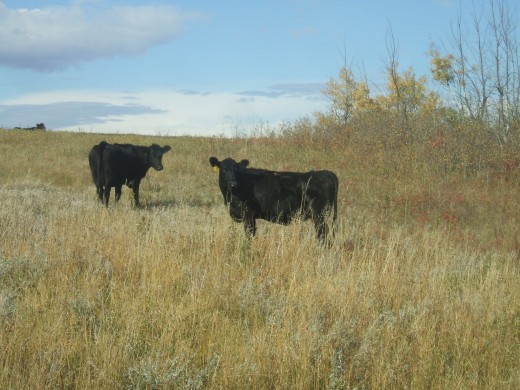
There is much talk about the ethics of raising livestock--especially cattle--on pasture versus feedlot and people appraising about how pasture is so much better to raise cattle on versus the "dirty, muddy, overcrowded" feedlots because cattle are healthier on grass, cleaner, they're eating their natural diet, yaddi yaddi yadda. Yeah, I've heard it all. The problem many don't see is the work involved in trying to keep pasture being just that versus turning that pasture into a big, muddy, dirty, overcrowded feedlot itself! The other problem is matching cows to grass. Simply throwing a bunch of random cows on a piece of grass and saying that that's more ethical than keeping them in a feedlot is really not looking past the end of your nose. There's a heck of a lot more to it than that, regardless if we or I am going to be talking about beef and/or dairy cattle here.
Someone told me that the very things that I am going to be discussing on here are "theories." I'm sorry, but these are not theories at all, these are real-world scenarios, science and applications that have been seen and shared by many producers who care enough to even mention them on the Internet, much less not turn a blind-eye to what is going on. Yes, there are cows and cattle out there that will lose weight and even die if put on a grass-only diet: these same cows do far better in a feedlot (and I may dare say even healthier) with a little grass on the side than if they were simply thrown out onto the pasture and expected to survive. "Natural" raising of cattle have their disadvantages: predators, exposure to adverse weather conditions, fluctuations in nutritional levels of pasture grasses, risks of anti-quality factors that may kill cattle on pasture, the list goes on.
And I haven't even scratched the surface yet.
Spoiled vs. Unspoiled
People have said--and I have to agree with them, to a certain degree--that having cattle on an all-grain diet is unethical and inhumane. Note I said to a certain degree. The problem with the statement that cattle are on an "all-grain diet" isn't really true. Cattle raised in feedlots (or even dairy operations) are really not on a 100% grain diet of, say, corn. Really, the diet is more like 75 to 85% grain and the rest is forage in the form of silage. Still is a "hot-diet," yes, and still can cause problems, like acidosis and founder (yes, cattle can get founder too, it's not just restricted to horses and ponies), but it's not "all grain."
The other problem is that cattle LOVE grain and silage. Any of you who have taught a herd of cattle that a bucket = grain = food = YUMMY!! know exactly what I mean! Teach them well enough and they will happily follow you to Hell and back if you've got even an empty bucket to carry around. It may not be a "natural diet" by many standards, but it still comes from grasses, is by no means man-made, and is considered to be candy and "comfort food" to cows all across the globe. In my humble opinion, a bovine that gets to have grain almost everyday is spoiled. Rotten. Just like a little kid who is allowed to have candy every day of the week if his parents let him.
Let me put it this way: cattle raised in a feedlot are literally spoiled rotten. They may be living in what seems like over-crowded, dirty, unsanitary conditions, but really they're living the good life. They get food coming to them twice to thrice a day, water and mineral available to them 24/7, and they can be as lazy as they want. They don't have to be out looking for food or water or shelter or out walking for miles just to get to a water source, they have it all right there. You may think that it's inhumane to have cattle sleeping or laying on a dirt mound "in their own feces" or in mud. Funny thing is most, if not all feedlots have a mound called a "cattle mound" or "cattle hill" that these bovine critters love to climb up on and sleep on regardless if it's muddy or dusty/dirty. The other ironic thing I've noticed from raising cattle is that, given a choice for them to sleep on a patch of dirt versus a grassy area, half the time--with some animals I've noticed it's most of the time--they'll choose to lay in a nice dirt patch instead of on the grass.
In feedlots and dairy operations, it's the humans working for the animals, not the other way around. No, not theoretically-speaking: practically and literally speaking. It's the cows that are going to be lazily standing around watching you run around like a decapitated chicken and enjoy every minute of it, enjoying their candy dinner of grain and silage (or, for dairy cows, a Total Mixed Ration [TMR] of hay, grain, and silage) in the mean time. Does that sound like those animals are being unethically treated? Not from my angle.
It almost sounds like raising cattle on grass in a natural, "free-range" operation is more unethical and inhumane than raising them in a feedlot, now, doesn't it? I know, it just takes a little playing of the Devil's Advocate and twisting the story around to make it certainly seem that way. But you have to see it that way: raising cattle on pasture is really making them not lazy and making them do the work for you, where YOU can enjoy standing around watch them work for you while you enjoy a nice Mars bar sitting on the tailgate of your F150. Nope, cattle raised on a grass-only diet, regardless if they're being managed in a Managed Intensive Grazing (MIG) program or are allowed to have a 160-acre pasture all to themselves to enjoy, are certainly not going to be the spoiled-type.
If you want to raise your cattle that way, then so be it. It's easier on you, less time on the tractor, less money to dole out for feed, fuel and fertilizer, and less capital to run and maintain. It can also be said that it'll be more money in your pocket and more time you can spend with family.
Or so it seems.
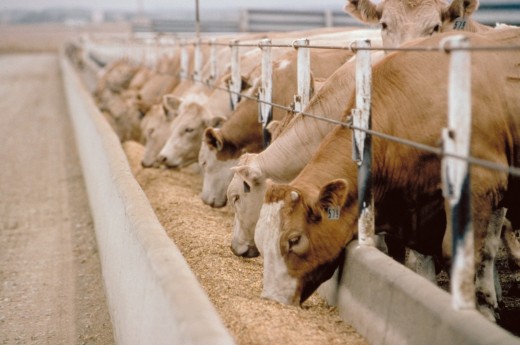
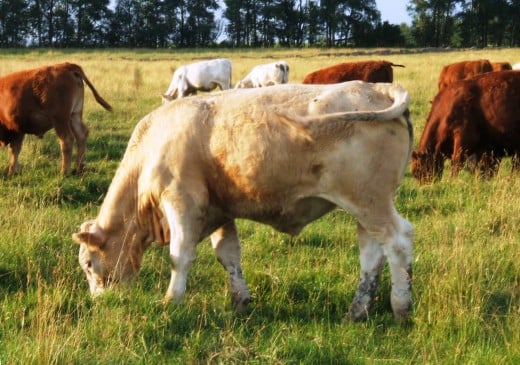
Raising Cattle on Grass isn't all Sunshine and Daisies
My concerns with raising cattle on grass are some of the following questions: Are they really going to do good on grass? Do I have to supplement with grain while they are on pasture? Are there going to be any risks with raising cattle on pasture, like with bloat, nitrate-poisoning, poisonous plants, fescue toxicity, grass-tetany, or even inadequate nutrition from the forages themselves? Are there predators about that will prey on or injure my animals? If you want ethical dilemmas with raising cattle on pasture and think that it's bogus that there even exists ethical dilemmas with raising cattle or any kind of livestock pasture, think again.
Are they really going to do good on pasture? Really, are they, if you do not supplement with grain and simply allow water and a bit of salt or mineral for the grazing season? By "doing well" I mean are your animals going to gain weight and literally get fat on grass, regardless if it's high-quality soft tame grasses like smooth brome, timothy or orchard grass or the more coarser native grasses? If they are, that's great! If not, then you had better either look at your animals or your soil or both to see what is going wrong and where. If you have animals that are not gaining weight on pasture from spring to the start of fall grazing or winter grazing, you will have to look at culling them out. Cows that are not weaning above-average weight calves is one of the biggest indicator in your operation, if you have a beef cow-calf herd. If you have soil that is lacking in certain nutrients, you will need to consider fertilizing your pastures and/or find ways to build humus/organic matter back into the soil. Manage your pastures more aggressively or more actively instead of passively. Don't simply see a pasture and think it's "good." You may need to test your soil and watch your animals to see if it really is good or not!
As far as "doing good" is concerned, you may need to keep an eye on those animals that are more thinner than they should be. If possible and necessary, they should be separated and managed separately, with the possibility that supplementation may be considered to get them to gain weight again. This is not just for beef cow-calf herds, but beef stocker, grass-finishing and even dairy operations. Use body condition scoring (BCS) to judge how much fat an animal is carrying and to see if they are either gaining or losing on pasture. It should be concerning if an animal is losing weight on pasture (grass-only) that has not reached maturity yet (seed heads or infloresences have not yet emerged) and is still in its vegetative stage; it is at this stage that an animal should be gaining weight on it due to the high nutrient value. If it isn't, it's not healthy and needs to be assessed by a veterinarian.
Regardless though, if you want to claim ethics in raising cattle on pasture or feeding through the winter, then you really should make darn sure that your animals are getting the nutrition they need. Otherwise, consider culling or having some extra work cut out for you, especially come wintertime.
Do I have to supplement with grain while they are on pasture? Supplementation is something I don't agree with, personally, but it is necessary for certain animals that don't have the genetics to be able to thrive and gain weight on grass alone. Supplement only when and however you think it necessary. Dairy cows--well, all dairy cattle anyway--will need some form of supplementation on a regular basis if they are on pasture for an entire grazing season. They will need more supplementation if the grass is poor quality, less to none if it is excellent. Dairy steers can be finished on grass if that grass and the soil beneath is good quality. If it is anything but except excellent, you must supplement with grain.
It really isn't unethical if you need to supplement with grain. But remember there's a difference between "need" and "want." If you don't need to supplement your cattle with grain but want to, then you will need to either find a reason why you need to do it; otherwise stop taking out that extra money out of your wallet and stop supplementing your animals when they don't need it. If you need to supplement your cattle but don't want to, then you will have to make a moral decision to cull out those animals that rely on supplementation and those that don't.
Are there going to be any risks with raising cattle on pasture, like with bloat, nitrate-poisoning, poisonous plants, fescue toxicity, grass-tetany, or even inadequate nutrition from the forages themselves? People are always so quick to see that grain will make cattle sick, no questions asked. But have they ever realized that grasses and forbs can make cattle sick too? It's all about the management issue: cattle will indeed get sick on grain if they are not managed properly on it. Cattle will get acidosis and bloat if they are put on a grain diet too fast, in the converting process from a mostly-forage diet to a mostly-grain one. It's just like with forages: you put some hungry cattle out on a lush, green alfalfa pasture with all the space in the world they can enjoy and you wonder why you winded up with a bunch of sick or dead animals. Nitrate toxicity can do the same, as can grass-tetany with early-lactating cows (beef OR dairy). Anthrax will even present itself in a pasture environment! The ethics in raising cattle on pasture, once again, is not simply throwing them out on it and thinking they're going to do better on that than confined in a confined operation. They need to be managed responsibly to prevent disease, anti-quality factors, mineral/nutritional deficiencies/toxicity or even death.
To answer the question above, yes there is. There will always be some level of risk of any of the examples above. Nutritional levels of a pasture is a big one, which brings me back to my rant about "good pasture." Good pasture isn't good pasture if you look at a piece of pasture and say, "That's good pasture there" or something to that effect. I'm serious here: what looks like "good" pasture could be really grass that is all water and little nutrient. And what could look like really crappy pasture could be sparse grass that is very high in nutritional value. May not do very well for a high-milking Simmental cow, but it's enough for a tough Hereford.
Are there predators about that will prey on or injure my animals? In a natural, truly free-range setting, absolutely. I live in an area where there are large coyotes that are not afraid to take down a young calf. Just south of me by a few miles there are cougars, wolves, and even bears around that will harm and kill livestock. We don't have coons nor possums; it's the 'yotes and feral or neighbor's dogs that will wreak the most havoc on our livestock. If you are wanting to raise livestock as natural as possible, you will subject them to possible predation. This really makes it less safe than one thinks, and even risk of being less healthy, less safe and certainly not as peaceful a life if a cow contracts rabies from a rabid bat, skunk or fox, or a newborn calf's eyes are gouged out by a hungry vulture. Think about it this way: CAFO operations keep animals safer than animals raised in a natural setting. Talk about ethics vs. ethics, eh?
"Overcrowding" can happen on pasture too
You think feedlots are overcrowded with a one to two-acre pen holding 50 to 80 animals at a time, what about pasture space? It's all too common to hear folks saying about how cattle have much more space on pasture than the feedlot, I like to tell them they haven't seen nothing yet. If you've read most of my hubs you may have already noticed I like to support the practice of managed intensive grazing. If you understand what managed intensive grazing is all about, you will see that cattle do get so-called "overcrowded" on a small 1- or 2-acre paddock where there are around 100 head of cattle grazing in that little paddock, and other subsequent paddocks of similar sizes, at a time. The idea behind this is to imitate the vast buffalo herds that often were conglomerated on one patch of prairie landscape in order to add more organic matter to the soil via hoof action and manure. Though I've never tried it, and hope to one day that I will, I've met people, both face to face and via cyberspace that have used such systems and have gladly shown me and many others proof that it actually works.
But the so-called "ethical concerns" about feedlots getting overcrowded is really immaterial if the same thing is happening in MIG systems or mob-grazing on farms and ranches in order to boost soil fertility, forage matter and forage yield. It's not hard on the animals either; they're just as healthy in a mob-grazing scenario as they would be if they have a whole pasture to graze. You might have a little problem with parasites, but that's nothing to fix if you add chickens or sheep to the rotations or find ways where you don't have to be applying insecticide to them all the time.
Someone told me that overcrowding on a pasture isn't going to help in growing any animal on it. I don't know where they got that from, but that's certainly not true. Managed intensive grazing, mob/rotational grazing or whatever you want to call it is a very highly useful system to use in not only improving pasture, but giving a growing animal like a weaned calf or a replacement/stocker heifer the nutrients it needs in addition to loose mineral or mineral block and water. When you improve your pasture, your grasses improve and when your grasses improve, they give more nutrients to the animals grazing them. You are not going to improve your pasture by using a continuous grazing system on it; indiscriminately you'll be selecting for grasses that are less palatable and less nutritious than the ones that your animals like to graze over and over again. When that happens, it's time to reseed the pasture again.
Sure continuous grazing is "ideal" in that it gives cattle all the space they want in the world (except for the fences that limit where they really want to go), but you're really only doing this for your animals' benefits, not the grass. You're being more of an animal farmer this way than a grass-farmer. If you want to really call yourself a grass farmer, then start using MIG.
Good and Bad to Anything and Everything
No matter what you choose or how you choose, there are always pros and cons to raising livestock. It makes it that much more difficult to find what is ethical and what isn't. Regardless, the choices you make in how you raise your animals is up to you. Just don't do it to please others.
I know I'm not supposed to do this at a closing section, but I know I didn't put in the concerns about antibiotics and hormones, another common concern with cattle being raised in CAFO operations versus pasture-based ones. The reason is this: it's unavoidable no matter how you look at it. Cattle are always going to have hormones in their system regardless if there are any implanted into their ears or not. Antibiotics need to be used if an animal, be it on pasture or in a feedlot, gets sick with a bacterial infection. The ethical agreement that animals be kept healthy does not mean that it should end with no antibiotics be allowed to enter an animal raised in a "natural" setting. It is not natural for an animal to have no hormones either; synthetic yes to not natural: natural, no.
Nevertheless, ethical treatment and ethical concerns for animals will always remain a grey area and always find some level of complexity to entice further discussion--and more hubs to write. Choose whatever meat you want to eat or however you want to raise you cattle, but remember this: don't go by what other people tell you. Take it with a grain of salt and make your own decisions as to what you think is ethical about raising cattle and what isn't.
